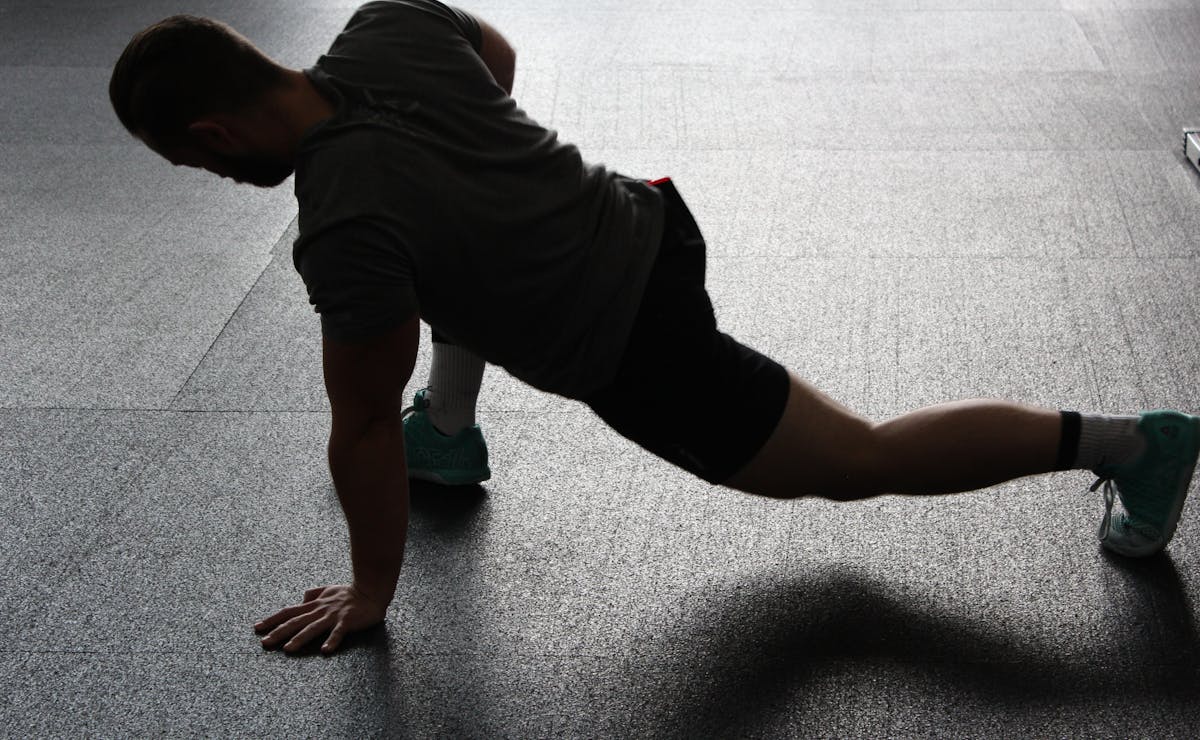The core muscles are nothing more than a network of tissues that work together to form a center of balance for the body . They also provide support for the spine and allow movements to be performed more effectively.
Working your core not only contributes to better posture, but is also essential for optimizing strength and endurance during exercise , making it fundamental for good athletic performance.
Therefore, if you want to better understand what core muscles are and how to strengthen them properly to have good performance, this content is for you!
What are the core muscles?
The term core, in the sports world, encompasses more than just the abdominal region. Its origin comes from the English word meaning center or nucleus.
In general, it refers to the muscles in the abdominal, lumbar and pelvic areas, which play an important role in stabilizing the body, being responsible for maintaining support in these regions, helping all movements to be performed correctly.
The core is made up of 29 pairs of muscles, working together to provide support to the spine and pelvis during functional movements . Strengthening the core not only helps maintain the functionality of the body, but also increases muscle strength and power, contributing to better physical performance.
What are the main core muscles?
As mentioned, the core is made up of several muscles. They are located in the central region of the trunk , which is the part of the body located between the rib cage and the pelvis.
Together, they involve the abdominal and lumbar region , forming a kind of “belt”. For more details, see below the 6 groups that are part of this system.
1. Rectus abdominis
The rectus abdominis muscles (popularly known as abs) are one of the most visible and recognizable muscle groups in the core .
Located in the front of the abdomen, these muscles are responsible for flexing the spine and help create force during leg or trunk lifting movements.
Additionally, they also contribute to postural health and can help reduce the risk of back pain and spinal-related injuries.
2. Oblique muscles
The oblique muscles are divided into two: external and internal. Both have a supporting function in stabilizing and moving the trunk.
The external muscles are responsible for lateral flexion of the torso, allowing the body to lean to the sides. They also participate in rotation, assisting in movements such as twisting.
The internal ones work together with the pelvic floor muscles to provide stability to the lower back and pelvis .
3. Transverse abdominal muscle
The transverse abdominis muscle is located in the deepest part of the abdominal region . It is so named because of its orientation, as its muscle fibers run horizontally towards the midline of the body.
In parallel, it acts as an “inner belt” that wraps around the abdomen, helping to stabilize the spine, pelvis and abdomen . In addition, along with other core muscles, this tissue is activated during movements that involve lifting, twisting and flexing the trunk , providing the necessary base for effective and safe movement.
4. Muscles of the lower back
The lumbar region supports the trunk and spine, allowing the person to maintain an upright posture, stand, walk and perform daily tasks.
This region is also activated during extension movements of the vertebrae, such as when you bend backwards. They also play an important role in controlling the actions of the spine , helping to prevent excessive and/or inappropriate displacements that can lead to back problems.
5. Pelvic floor muscles
Although overlooked by some, the pelvic floor muscles provide support for the internal organs and aid in bladder and rectal control.
In parallel, in sports that involve impact, such as running, they help to absorb shock and maintain the integrity of the pelvic structures , reducing the risk of possible injuries.
6. Diaphragm and respiratory muscles
Finally, the diaphragm and respiratory muscles help balance the trunk during physical activities , due to the abdominal pressure they create.
Additionally, when breathing, they help maintain proper posture , preventing back pain and allowing more effective movements.
Therefore, recognizing all these muscles is important for good postural health, prevention of possible injuries and effective sports performance.
Why strengthen your core?
Strengthening your core is essential for a range of everyday activities. Having strong muscles provides a solid foundation for your body, which in turn improves your quality of life.
In everyday activities, they help stabilize the spine during simple tasks , such as bending down to tie your shoes. Therefore, maintaining proper posture can help prevent back pain and long-term health problems.
Additionally, seniors and people with back problems can benefit significantly from acquiring good core strength, as this helps maintain mobility and reduce the risk of falls .
Why should athletes pay attention to their core?
Athletes from different sports depend on a strong core, after all, it is an essential component to improve sports performance and reduce the risk of possible injuries.
In endurance sports, such as running and cycling, it directly impacts performance and well-being during exercise. In addition to providing postural stability, it also allows these athletes to maintain a proper position when running or cycling, for example.
Furthermore, a strengthened core improves endurance and economy of movement , allowing practitioners to maintain a steady pace and achieve better results.
After all, how do you work your core muscles?
To have a strong core, it is recommended to incorporate specific exercises , such as planks, sit-ups and leg raises, which aim to target the muscles in the region in a complete way. However, it is important to emphasize the need for gradual and safe progression in training, allowing the body to adapt.
Furthermore, to work it into your sports routine, it is advisable to dedicate time regularly to these exercises , as stimulating all the areas that make up this system contributes to more efficient performance and the prevention of possible injuries.
Finally, don’t forget that a strong core not only improves performance, but also benefits your overall health. So, by incorporating core training into your lifestyle, you can have better stability, strength, and endurance, promoting a more active and healthy life!

